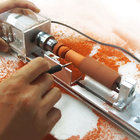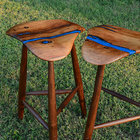Purely speculating and brainstorming. Where do the opportunities still sit? Tool manufacturing? Instruction? Turning material?
What would you do if you had time and unlimited start up funds?
My wife says there should be a business or a show, where instead of organizing houses, they do woodshops. It’s a slippery slope to “Hoarders: woodworking edition”.
I would pay someone else to do my job so I had more time to turn wood.
What would you do if you had time and unlimited start up funds?
My wife says there should be a business or a show, where instead of organizing houses, they do woodshops. It’s a slippery slope to “Hoarders: woodworking edition”.
I would pay someone else to do my job so I had more time to turn wood.


